|
|
|
Some of our native animals include:
Crocodiles and lizards
Dingoes
echidnas
Kangaroos
Koalas
Kookaburras/cockatoos/galahs/etc..
Platypus'
Possums - many of
Sugar Gliders
Wombats
Research & Facts
Australia is well known for having some of the most fascinating species of
"flora" & "fauna" found nowhere else. The most probable
reason for this is due to the fact that Australia is isolated from the rest of the world.
Australia has many inhabitants of the deserts, forests, streams and mountains.
An amazing feature of marsupials is that they are born premature and kept in a pouch equipped with mammary glands, which inject milk into the young animal's mouth (it is too young to suck even).
2/3 of all living marsupials occur in either Australia or Papua New Guinea (PNG). The most common types of marsupials are Kangaroos, Koalas, Wombats, Possums (aka. Opossums) and wallabies. Some nocturnal marsupials include Mice, Dunnarts, Sugar Gliders and Bandicoots.
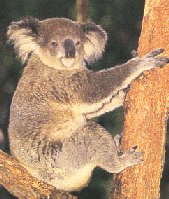
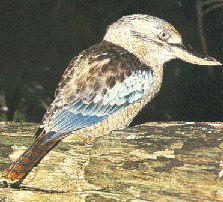
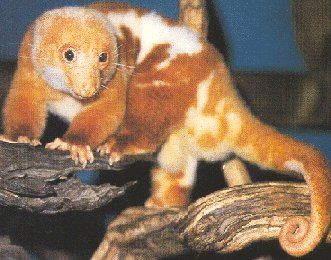
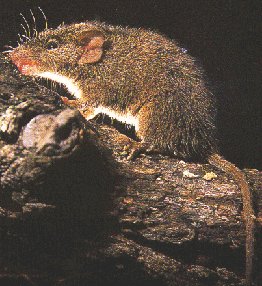
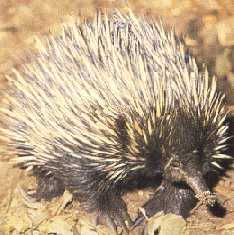
1. Koala, 2. Blue winged Kookaburra, 3. Spotted cuscus, 4. Brown
marsupial-mouse, 5. Short-Beaked Echidna
Kangaroo Picture Gallery plus Roo.avi (5 seconds of a roo bouncing through desert).
Koalas are an endangered species and attempts to increase the population are being made. They can be located in suburban backyards up gum trees. These sightings often occur in bushland. The koala has a hard plate on his back to make sitting in trees easier, they don't drink water either but get moisture from Gum tree leaves.
Kookaburra An absolutely amazing bird, with an amazing tune. They can be sighted almost anywhere. Living mainly on large insects, mice, small birds, and small snakes.
Spotted cuscus Believed to be an endangered species. They are nocturnal animals that feed chiefly on fruit and leaves. Some species feed also on nectar, insects, and occasionally, small birds.
The brown antechinus or Marsupial Mouse. This is a shy rodent but quite common. They are nocturnal but extremely active and definitely aren't a full-on pest.
Echidna, one of the most unusual creatures around. Rare sightings occur on wild echidnas but in zoos they are quite quite common. The sharp spikes on their back retracts when in contact with something, so obviously you shouldn't try to pick them up. They do walk extremely slow and don't appear too shy. Their short beak is used to suck ants and termites up.
Queensland - There are a few places notable places recommended. Bunya Park Zoo (17Km from Brisbane, at Eatons Hill), a popular and large place where most of these animals run wild, you can walk right up to them. Currumbin Sanctuary, a fantastic sanctuary full of wildlife. Dreamworld - this is a theme park that has its own zoo, small but nice.